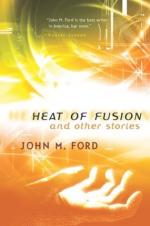|
This section contains 387 words (approx. 2 pages at 300 words per page) |
Matter can exist in at least three physical states: solid, liquid, and gas. The physical state, or phase, of a substance is affected by temperature, or the amount of heat energy present, and by other factors such as pressure. Just as ice melts into water then boils into steam as heat is applied, many substances will pass through solid, liquid, and gaseous phases with the application of heat energy. The amount of heat energy required to melt a given mass of a solid at its melting temperature at a given pressure is called the heat of fusion of the substance. It is the amount of heat energy that is absorbed by the substance as it converts from solid to liquid without change in temperature. However, the heat of fusion may vary within a substance group because of small changes in the substance's composition.
Because a change in temperature does not occur during the phase shift, the heat of fusion is also sometimes referred to as latent heat. For example, when one gram of ice is steadily heated, its temperature will increase until it reaches a point where it begins to turn into liquid water. At this temperature, its melting point, the ice continues to melt into liquid water but the temperature remains the same even though heat is being applied. The temperature of the ice will remain the same until all is converted into water, after which the temperature will again begin to increase as heat is supplied. The latent heat energy required to change the gram of ice into a gram of water at the melting point, without a change in temperature, is the heat of fusion for water. Some gardeners use the principle of heat of fusion by putting buckets of water near plants when the temperature is expected to drop a bit below freezing to protect them from frost damage.
Many solids have characteristic heats of fusion and melting points, which are definitive physical characteristics of the substances. For example, ice requires about 80 calories of heat energy to melt one gram of ice into water at its melting point. Furthermore, the amount of heat that must be removed from a sample for it to freeze into a solid is equivalent to the heat of fusion required for melting.
|
This section contains 387 words (approx. 2 pages at 300 words per page) |


